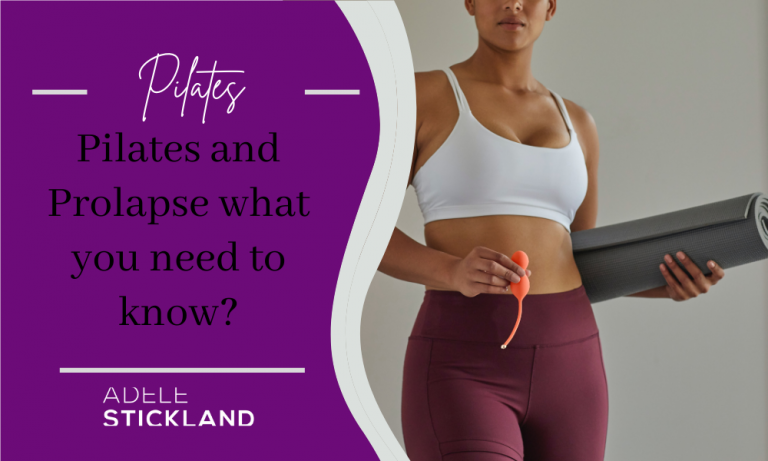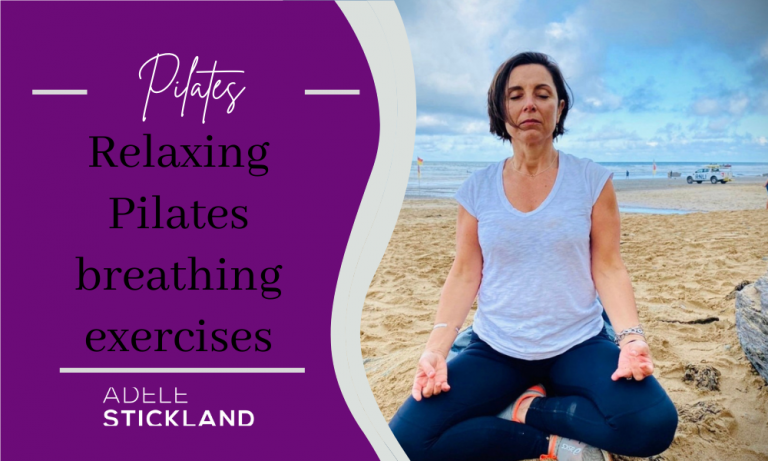
Exercises for stronger core
Pilates is a mind-body technique it is wonderful to rebalance your mind and your body after a long hard day in the office. Pilates has

Pilates enables you to reset and aids physical recovery from the day to day strain you put it under. Whilst practising Pilates you are placing your bones in specific shapes with your skeletal muscles, twisting and turning to massage your internal organs, removing restrictions and adhesions in your connective tissues, and both challenging and nurturing the various systems in your body:
Psychologically you will connect to the ebb and flow of not only your own breath but also bring your flowing breath in alignment with your body’s movements. Energetically, aligning your body which gives you freedom of movement and allows for the removal of blockages which eases your flow of energy.
Longevity: Practising safely
Noticing how you feel daily and practice Pilates with awareness and intention. Working with your breath and your body noticing where your blockages are and releasing tension with simple body awareness and loving attention.
Bone alignment is a fundamental practice of Pilates – placing your bones in a way that allows safe and easy movement and releases restriction.
The human skeleton consists of 206 bones and is comprised of:
– the axial skeleton: made up of the cranium (skull), 33 bones of the spine, sternum (breast bone) and 12 pairs of ribs. And
– the appendicular skeleton: the shoulder girdle, pelvic girdle and limbs and extremities of each of these.
There are six major functions that the skeleton is responsible for;
Bones are living tissue and respond to the healthy stress of weight bearing and adequate compression. Therefore it is important to move them and place them in certain ways that allow them to remain strong, supple and healthy so they can continue to effectively perform their necessary functions
The skeletal system is fascinating when you think of the shapes these bones can be arranged in. At the bone level we are essentially an axis with a bunch of levers and fulcrums your muscles are important in helping to get in and out of all our desired shapes it is the bones themselves, their intimate relationships with their fellow bones in the body and both their abilities and limitations.
Activating your muscles with awareness and intention in order to support both static holding postures, and the transition into and out of such held postures.
What are muscles, how do they work
There are around 700 muscles in the human body. Three types of muscles are:
To optimize the psychological and energetic benefits of Pilates you need to create a strong foundation for your body to heal, grow and thrive. This is where skeletal muscle activation plays an important part.
Skeletal muscles are striated; the smallest unit is a fibre, many fibres form a fascicle, many fascicles form a bundle and many bundles form a skeletal muscle. Skeletal muscle fibres operate in one of three states:
When contracted, skeletal muscles move your bones where two bones meet (hinge joint, ball-and-socket joint and compressive joint).
You cannot move your body without the use of your skeletal muscles. The only posture without our muscles activating is lying on the floor.
Muscle contractions and their importance
In order to move your skeletal muscles will concentrically and eccentrically contract. Landing and holding a posture like a plank for instance, is the isometric contraction that keeps you steady, stable and comfortable.
Concentric contraction of muscle fibres decreases a joint angle, eccentric contraction is an active yet lessened contraction of muscle fibres during the increase of a joint angle and isometric is the activation of muscles with no movement of bones.
The constant and continuous scanning of the body in a statically held posture, finding what muscles need to activate (get stronger) and what muscles need to relax (get softer) and making the micro movements necessary to find ease, is the fullest exploration of our body’s ability to isometrically contract.
Agonist and Antagonist muscles
In the human body there are over 600 skeletal muscles and all of them are in a major relationship with at least one other muscle/muscle group.
When a muscle is an agonist it is the primary mover of the joint. It can only do its job efficiently and effectively if its antagonist “better half” (the opposing muscle, the muscle on the other side of the body) relaxes and releases.
For example, your double headed biceps muscle contracts to flex your elbow (draw your lower arm and upper arms towards each other). Your biceps can only do their agonistic job efficiently and effectively if the three-headed triceps muscle (which is an elbow extensor) relaxes and releases. No matter how strong your biceps are they can not flex the elbow if the triceps are tight. The same thing applies when the triceps want to straighten your elbow (extension)…the triceps cannot do their job efficiently and effectively if the biceps refuses to relax.
Therefore Pilates is a well-balanced environment where the whole body is stretched and strengthened; move, shape and bend the body in one direction and then ensure you move, shape and bend it in the complete opposite direction. This translates into the anatomical language as flexion and extension in the sagittal plane, abduction and adduction in the coronal plane, and rotation in the transverse plane. This is simply expressed as pose and counterpose, the simplest example being Cat and Cow Poses.
Harmful habitual patterns and undoing them
Habitual patterns are created within your body (and your mind) from what you do at work and play, from physical or psychological trauma, even from the way you habitually position your body whilst sleeping. Now, a shape created in the body once, twice or even 100 times over the span of a lifetime may not necessarily be harmful. It is the hundreds or thousands of repetitive shapes and movements you create in and with your body every day, every week, and every year that becomes injurious and debilitating.
For example, if you spend time at work sitting at a desk for 8 or more hours a day or drive for a living. You’ll find yourself in a forward flexion in the sagittal plane with upper arms (humerus) in internal rotation (rotator cuff muscles subscapularis tight and infraspinatus weak), chest muscles (pectorals) held in a tight contracted (eventually weak) state, upper back muscles (rhomboids and trapezius) stretched and weak, shoulders held in an elevated position (upper trapezius and levator scapula tight), abdominals tight and weak, and hip flexors (iliopsoas) super tight encouraging super weak lower back muscles (quadratus lumborum and other extensors).
All of this and more can be seen and felt on the mat in certain poses: weak infraspinatus, quadratus lumborum and abdominal muscles, as well as tight pectorals, upper trapezius and elevator scapula muscles,
tight pectorals, weak upper and lower back muscles, and tight iliopsoas and weak leg muscles (from sitting too much) and tight or weak internal or external hip rotators (from driving leg habits or from crossing legs at desk) will all be felt in standing and balancing postures.
Everything you think, feel and do accumulates in your body and your weaknesses will become apparent in Pilates. Pilates brings awareness to your weaknesses and encourages and to teach you to learn, grow and heal.
One of the greatest benefits of Pilates as a physical discipline is the undoing of our dysfunctional habitual habits and patterns.
Clients arrive with different strengths and weakness, varying postures and occupations, Pilates helps them put their tired bodies back together again. It offers a well-balanced sequence with both poses and counterposes (think agonist and antagonist)


PS. Don’t forget Gorgeous! book – your insight into great health and vitality Gorgeous! how to look and feel fantastic every day. Click here to find out about your Gorgeous book
[random_testimonial theme=”default_style” count=”1″ show_title=”0″ use_excerpt=”0″ show_thumbs=”1″ show_date=”1″ show_other=”1″ hide_view_more=”0″ output_schema_markup=”1″ show_rating=”stars”]

Pilates is a mind-body technique it is wonderful to rebalance your mind and your body after a long hard day in the office. Pilates has

My passion is Pilates, I love it. But there are some moves you need to be careful of if you have a ‘prolapse’. I was

This blog will outline a few relaxing breathing exercises to help calm your mind, relax your body, aid digestion and your mental health. Don’t miss: